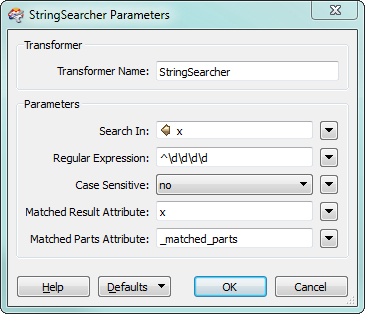I have a column containing the coordinates information such as:
54960000.0 643600000.63 0.0
....
I am wondering to know if there is any way to extract the first four integers for the X and Y values.
At the end, I need to have the value like "5496,6436"
One possibility is for example using attributesplitter. But Is it also possible to use stringreplacer doing it only in one step?
Thank you,
Mani






